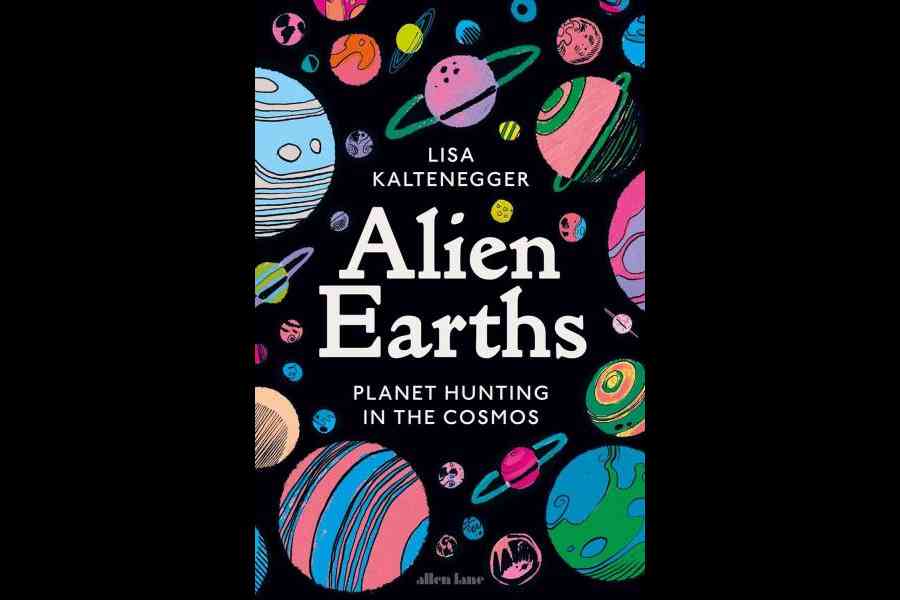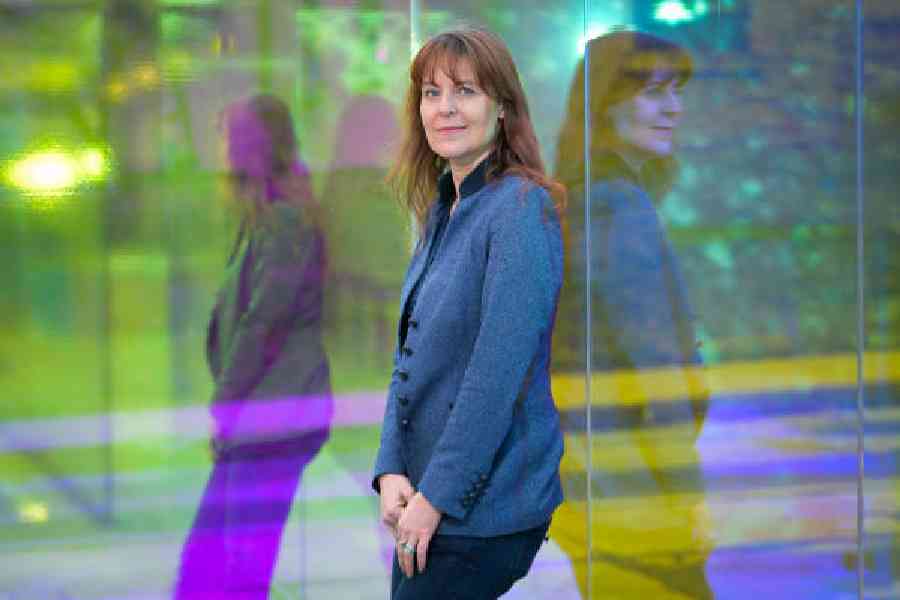Have dinosaurs evolved on other worlds? Could we spot a planet of glowing organisms? What nearby star systems are positioned to observe Earth passing in front of the sun?
These are just a few of the questions that Lisa Kaltenegger has joyfully tackled. As the founding director of the Carl Sagan Institute at Cornell University in New York, US, the astronomer has pioneered interdisciplinary work on the origins of life on Earth and the hunt for signs of life, or biosignatures, elsewhere in the universe.

Kaltenegger’s new book, Alien Earths: The New Science of Planet Hunting in the Cosmos, chronicles her insights and adventures spanning an idyllic childhood in Austria to her Cornell office, which previously belonged to astronomer Sagan. She spoke with The New York Times about the intense publicinterest in aliens, the wisdom of trying to contact intelligent civilisations and the weirdest creatures she’s grown in her lab.This conversation hasbeen condensed and edited for clarity.
Q You look for real ali-ens in the observable universe. How much is the diversity of opinion and emotion from people around the search forextraterrestrial life topof mind in your research? Or are UFOs and sci-fiETs something you haveto tune out?
For me, it’s inspirational that so many people are excited. The other part of that coin is that we are so close, because we havethe James Webb SpaceTelescope now being able to look at these small planets that could potentially be like Earth. We don’t have to go with dubiousor hard-to-interpret evidence anymore.
I wrote this book because I think a lot of people might not be so aware of where we are right now and that they are living in this momentous time in history. We can all be apart of it.
Q How should people prepare for a potential detection of signs of something living in a distant planet’s atmosphere that’s not like you see in the movies, that’s maybe less satisfying?
If we were to find signs of life — any signs that we can’t explain with anything else but life — then that just means we live in a universe teeming with life, because we’re just on the verge of being able to find it. And it’s so hard, even with the best telescopes, so if we find anything, that means there’s so much more to find out there. I’ll celebrate, whatever it is.
Q The title Alien Earthsrefers to alien worlds but also the past andfuture versions of Earththat are alien to us. What is a moment in Earth’s history that you would want to go to?
The moment and place when life started. Because it is such a mystery. You don’t need the whole planet to have conditions to get life started. It could be a niche somewhere. It could be an asteroid that hit just with the right speed and energy and mixed the chemicals on Earth up the right way. It could have been on an ice shell or in a shallow pond.
Q There is a heated debate over whether we should be actively trying to contact alien life or if we should just be passively looking for signs of it. Where do you come down on that question?
I was at a Vatican Observatory conference, and I was actually the speaker after Stephen Hawking. Oh, my God, right? Amazing. But it’s really interesting because he was one of the people who cautioned very much against this.
We are 2 billion years too late to worry about it. Anybody who would have looked at us for 2 billion years would know that there’s life on this planet. Basically, the cat’s out of the bag.
But I think it is a very valid concern in terms of social science or sociology because we don’t wantto do anything to scarepeople. It is worth asking the question to ourselves, too: are we at the point,all of us, where we’d actually like to communicate with other civilisations? And what would we want to ask?
Q You have a lab where you’re growing microbes to inform the search for life. What’sthe weirdest thing you have grown?
A pink fungus. You have to be very careful about fungi because they spread like crazy. This is why I’m working with microbiologists. One of my team’s microbiologists is like, “I’m not touching this and contaminating all of Cornell with pink fungus.” Imagine that.
Q So you had to take special precautions to make sure that this alien didn’t invade.
I just imagine a world overgrown with pink fungi.
Q You have published a study that simulated conditions analogous to the age of dinosaurs on other worlds. How can we specifically search for alien dinosaurs? Because I want to find alien dinosaurs.
During the age of the dinosaurs, there was more oxygen and also more methane, and that allowed for these huge creatures. At least that’s the idea, right? More oxygen can actually make creatures bigger, thus huge dinosaurs.
The fun part when I talked about this withmy teammate — geologistRebecca Payne — is that actually it could be much easier to find a dinosaur planet, to find “Jurassic World”.
Now the question is, of course: does it have to be dinosaurs? They could be really funky different kinds of organisms that don’t look like dinosaurs.
NYTNS











